The nervous system is the intricate communication network within the human body, coordinating various physiological processes and enabling environmental interaction.Comprising the brain, spinal cord, and peripheral nerves, it regulates everything from basic reflexes to higher cognitive functions, showcasing its importance in sustaining life and facilitating complex behaviors.
Concept mapping emerges as a powerful visual tool to unravel the intricacies of systems like the nervous system. By organizing and connecting key concepts, structures, and functions, concept maps offer a structured approach to comprehension, enabling learners to grasp complex relationships and hierarchies within the nervous system with greater clarity and depth.
In this article
Nervous System Concept Map
The nervous system concept map serves as a visual representation of the intricate network responsible for orchestrating bodily functions and responses. A structured layout elucidates the central and peripheral nervous systems' organization, components, and functions.
This concept map enhances understanding by illustrating the relationships between neural structures and processes, offering a comprehensive overview accessible to students, educators, and enthusiasts alike. Explore the following key components outlined in the concept map.
Nervous System Overview Concept Map
This concept map likely starts with a central idea representing the nervous system, branching into two main sections: the central nervous system (CNS) and the peripheral nervous system (PNS).
- Sub-branches under the CNS may include the brain and spinal cord, with further divisions illustrating different brain regions and spinal cord segments.
- The PNS section might extend into sensory and motor nerves, highlighting their roles in transmitting information to and from the CNS.
Neuroanatomy Concept Map
This map is probably structured around anatomical structures of the nervous system.
It may feature branches for major brain regions such as the cerebrum, cerebellum, and brainstem, with sub-branches detailing specific lobes and areas within these regions. Similarly, the spinal cord might be depicted with cervical, thoracic, lumbar, and sacral segments, each associated with particular functions and nerve connections.
Nervous System Functions Concept Map
This concept map likely focuses on the functional aspects of the nervous system. It may start with a central idea of nervous system functions and branch into sensory input, integration, and motor output.
Sub-branches under sensory input could include touch, taste, smell, vision, and hearing, while integration might involve processes like memory, learning, and decision-making.
Motor output branches may cover voluntary and involuntary movements, including reflex arcs and autonomic responses.
The concept map above comprehensively depicts the nervous system's anatomy and functions, offering a structured framework for understanding its complexities and interconnections.
Visualizing the Nervous System with EdrawMind
EdrawMind is a powerful and user-friendly concept mapping software designed to facilitate the creation of visually engaging and informative concept maps. With its intuitive interface and robust features, EdrawMind enables users to organize complex ideas, structures, and relationships clearly and systematically.
Whether you're a student, educator, or professional, EdrawMind provides the tools to visualize concepts, brainstorm ideas, and enhance learning outcomes.
Demonstrating How to Create a Concept Map of the Nervous System Using EdrawMind:
Here's a step-by-step guide on how to create a concept map of the nervous system using EdrawMind:
Step 1. Launch EdrawMind
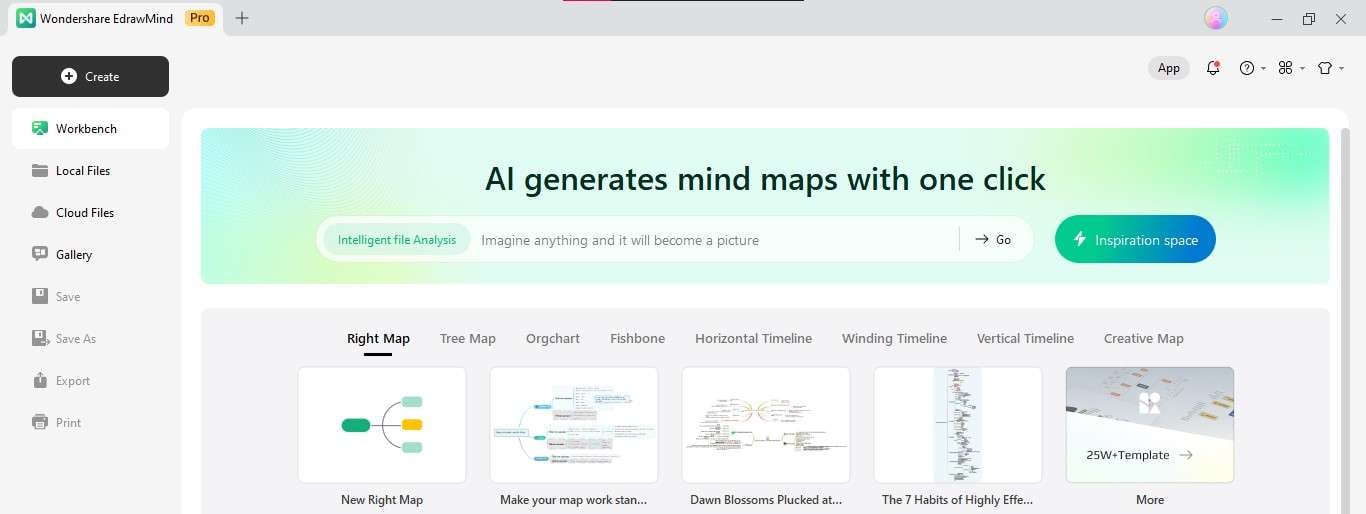
Open EdrawMind on your computer or device. You can download and install it from the official website if you don't have it installed.
Step 2. Start a New Project
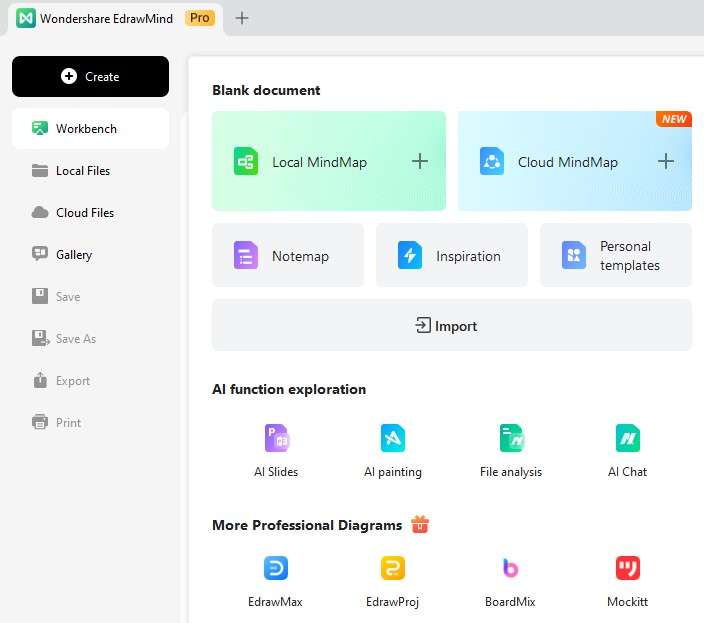
Once EdrawMind is open, start a new project by selecting "New" or "Create New" from the menu or toolbar. Choose a blank template or a pre-designed template if available.
Step 3. Create Central Idea
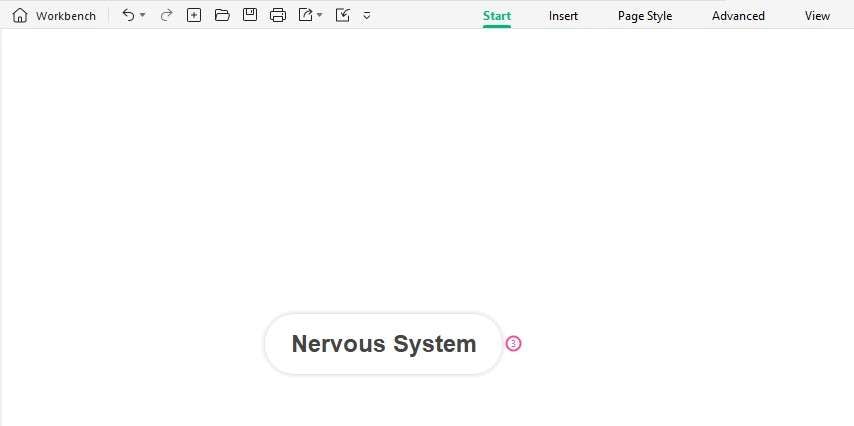
Begin by creating a central idea representing the nervous system. Click on the central node (usually labeled as the main idea or central topic) and type "Nervous System" or your preferred title.
Step 4. Branch Out
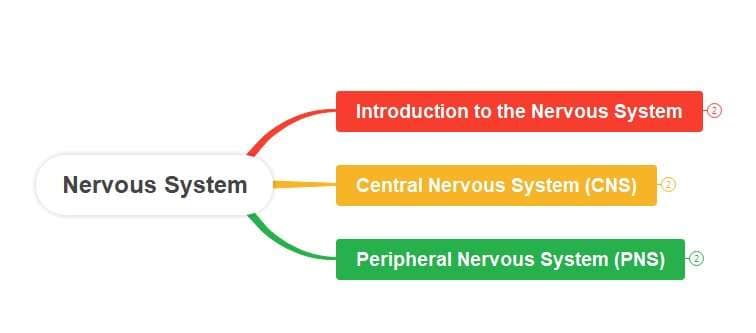
Expand from the central idea to depict the main divisions of the nervous system: the central nervous system (CNS) and the peripheral nervous system (PNS). Create branches for each division branching out from the central idea.
Step 5. Detail Components
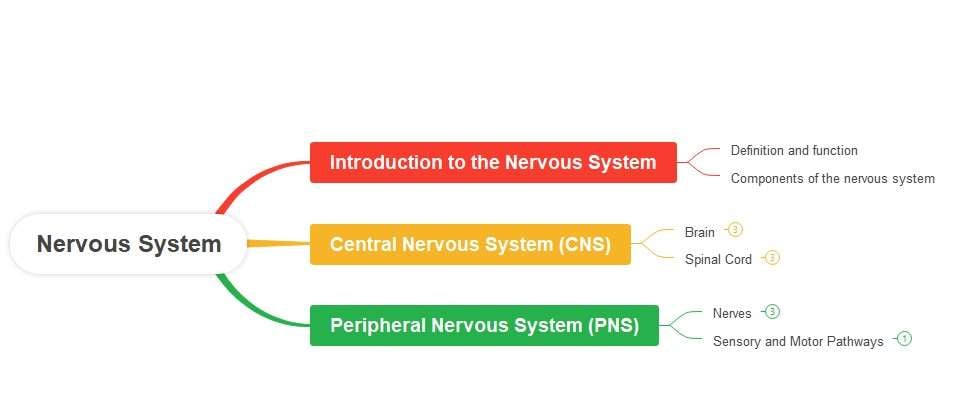
Within each division, add sub-branches to illustrate specific components. For the CNS, you can include branches for the brain and spinal cord. For the PNS, add branches for sensory and motor nerves.
Step 6. Anatomical Structures and Functions
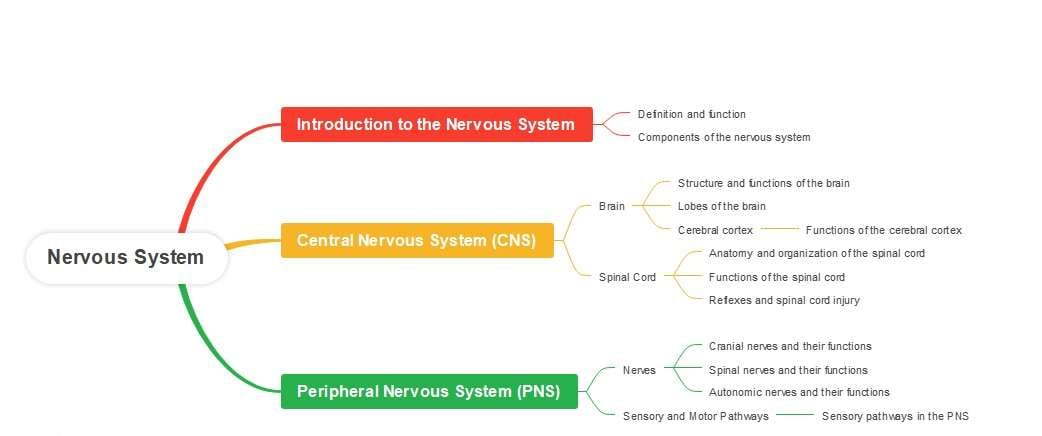
Further, expand each component to include anatomical structures and functions. For example, under the brain, you can add branches for the cerebrum, cerebellum, and brainstem, along with their functions.
Step 7. Interconnections and Relationships
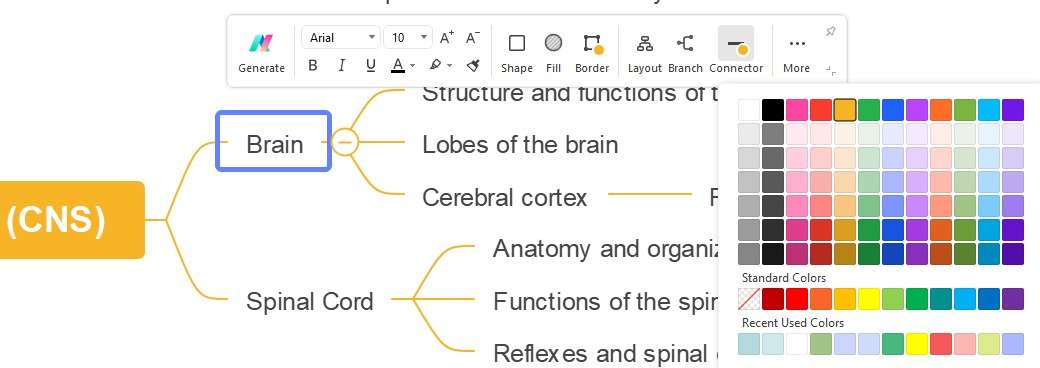
Connect related components and structures using lines or arrows to illustrate their relationships. For example, connect sensory nerves to specific brain regions responsible for processing sensory information.
Step 8. Customize and Enhance
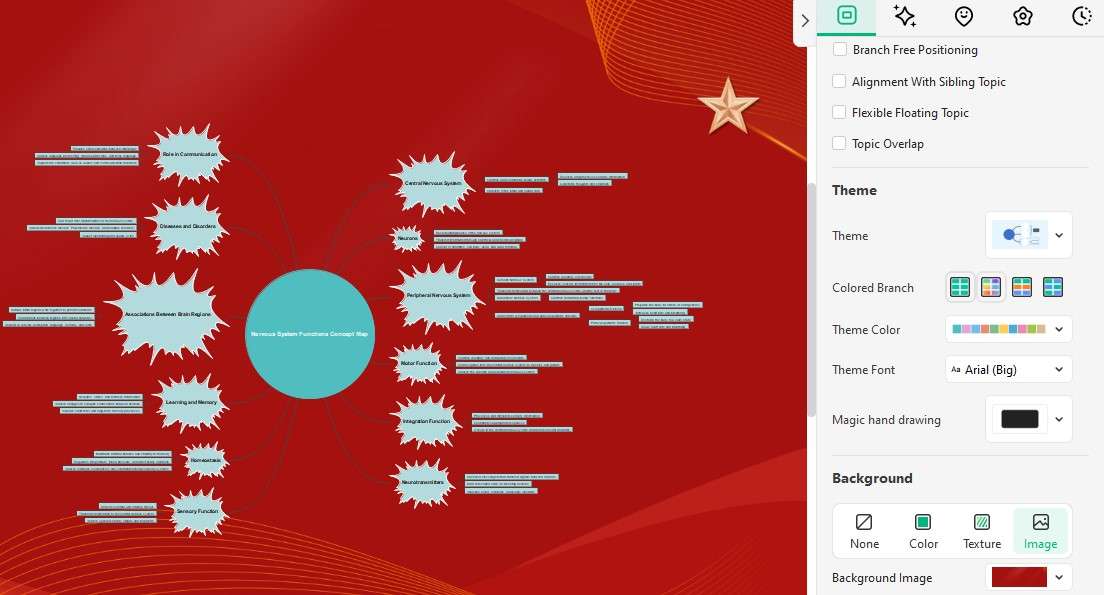
Customize your concept map by adding colors, icons, and images to make it visually appealing and easy to understand. Use different colors for different branches or sections to visually differentiate them.
Step 9. Review and Refine
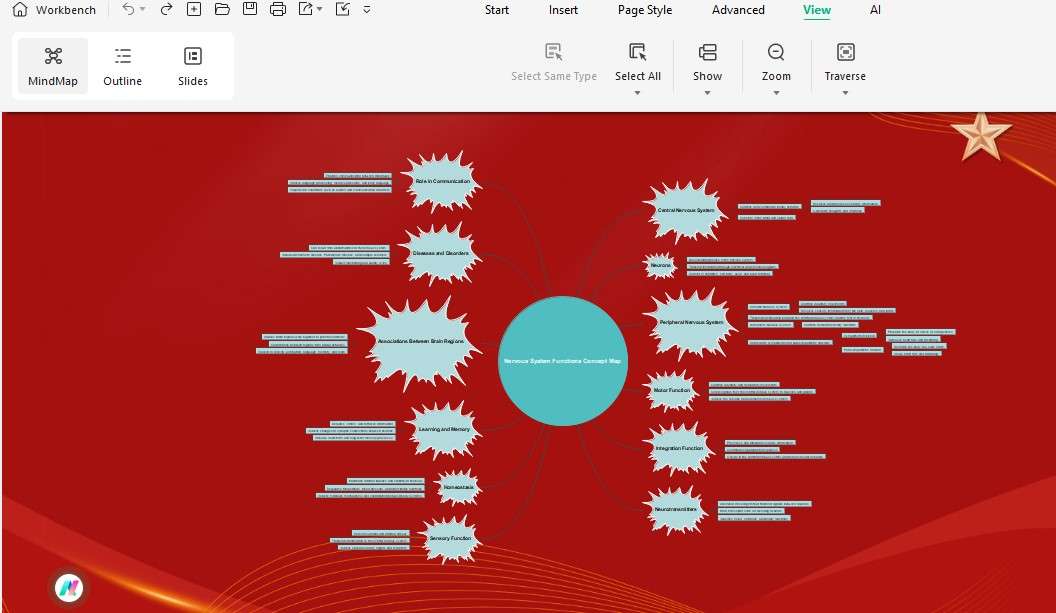
Review your concept map to ensure accuracy, coherence, and completeness. Make any necessary adjustments or refinements to improve clarity and organization.
Step 10. Save and Share
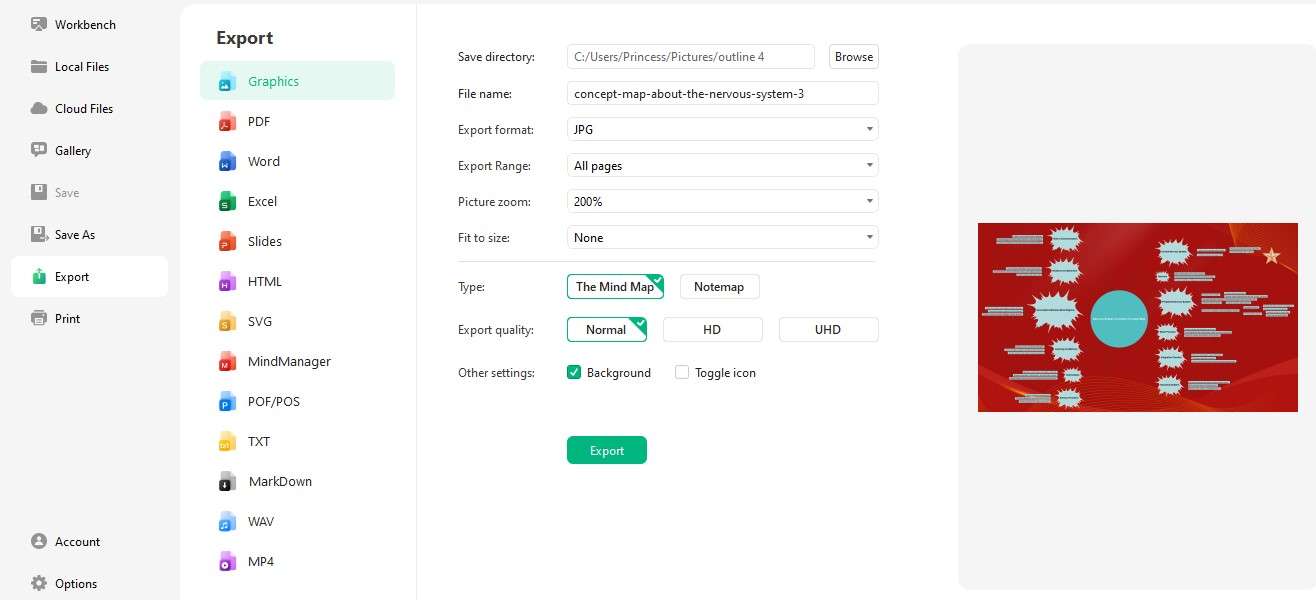
Once you're satisfied with your concept map, save your work and export it in your preferred format (e.g., JPEG, PNG, PDF). You can also share your concept map with others by exporting it or sharing it directly from EdrawMind.
Benefits of Visualizing the Nervous System through Concept Mapping
Concept mapping offers a powerful approach to comprehending the intricacies of the nervous system, providing a structured framework for organizing and visualizing complex information. By leveraging tools like EdrawMind, individuals can unlock many benefits that enhance their understanding, retention, collaboration, and accessibility to knowledge. Let's explore these advantages in detail:
Enhanced Understanding
Concept mapping facilitates the organization and visualization of intricate details about the nervous system, allowing individuals to grasp its structure and functions comprehensively.
Improved Retention
The visual nature of concept maps aids in memory retention by associating key concepts with visual cues. This makes it easier for individuals to recall information about the nervous system more accurately.
Clarification of Relationships
Concept mapping reveals the intricate relationships and connections between different nervous system components. This holistic view provides insight into how various structures and functions interact and influence each other.
Facilitation of Collaboration
EdrawMind enables collaborative concept mapping, allowing multiple users to contribute ideas and insights to create a concept map. This fosters teamwork and collective learning, enriching the understanding of the nervous system through diverse perspectives.
Versatility and Accessibility
With its user-friendly interface and flexible features, EdrawMind caters to users of all levels, from students to professionals across various disciplines. Its accessibility ensures that individuals from diverse backgrounds can easily explore and understand the complexities of the nervous system.
Overall, visualizing the nervous system through concept mapping enhances individual understanding, fosters collaboration, and increases access to knowledge, ultimately contributing to a deeper appreciation of this vital biological system.
Conclusion
Concept mapping is a pivotal methodology for comprehending the intricate nuances of the nervous system. It offers a visually appealing and organized approach to studying its structure, functions, and interconnections.
Through platforms like EdrawMind, individuals are empowered to create comprehensive concept maps that enhance understanding, retention, and collaboration in exploring the complexities of neurobiology. Embracing concept mapping fosters deeper insights into the nervous system and encourages further exploration and application of this valuable tool in advancing our understanding of the brain and its myriad functions.



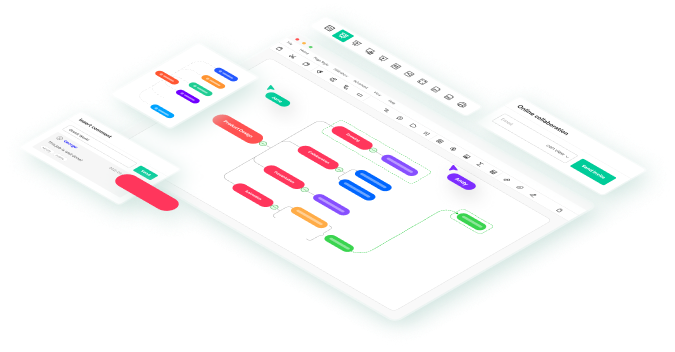

 below.
below.  below.
below. 

